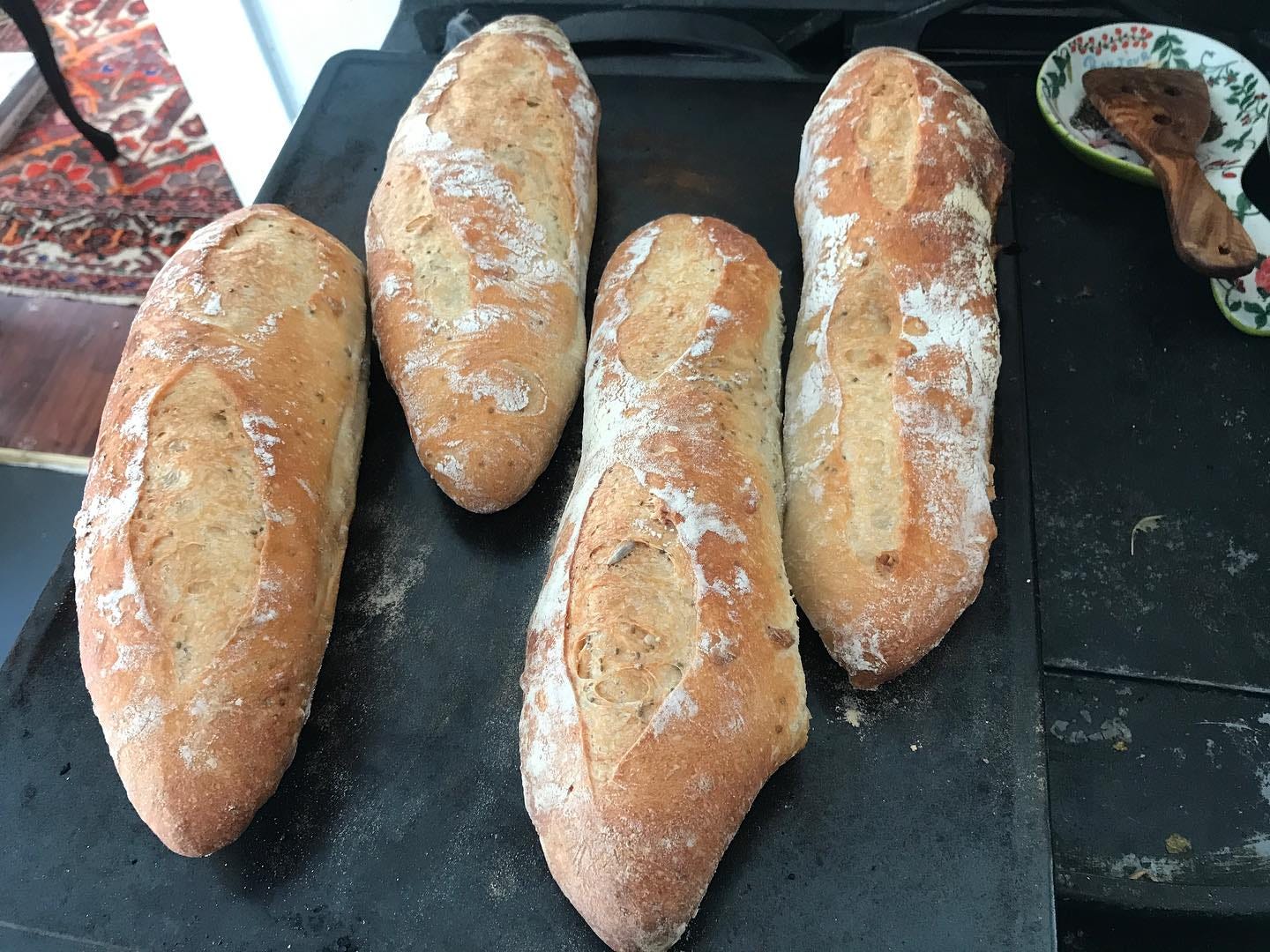Photo by Alex Bunardzic
Soon after we moved from Europe to North America, we realized that for some strange reason, it is nearly impossible to find good bread in the New World. Our palettes have been groomed in the Old World to enjoy all kinds of sophisticated pastries, including good breads. But in North America, bakeries do not offer any of the plethora of diverse pastries that we grew up with.
It was out of desperation that I decided to learn how to make bread from scratch. Of course, there was that shameful short period where there was hope that one could simply buy a bread machine and thus find the way out of the having to eat that dreadful lump of something, a lump that one gets in local bakeries, and that sells under the name ‘bread’ (but feels as if you are biting into a nauseatingly sweet brick). North American breads tend to contain that ghastly corn syrup, and are always dense, heavy as a brick.
But the bread machine also produces terrible, sorry excuses for something we might attempt to call ‘bread’. So, it was back to the natural ways — buy a sack of flour, some yeast, and then combine it all with warm water and some salt.
The road toward achieving good hand-made bread in your own kitchen is long, winding, and treacherous. But I persevered, and after a number of botched attempts, finally reached the point where my home-made bread started becoming famous among our friends.
It was about a year ago that I tried, for the first time, to make baguette. My wife sent me the recipe, as a challenge. I tried to make it, but it turned out pathetic. Not nearly as good as my rustic European bread.
But hey, as a competitive male, I could not let it just slide. Now I HAD to learn how to make baguette!
Let me tell you, it ain’t easy. I managed to ruin quite a few batches while trying to make decent baguette. But, as the saying goes, if everything goes according to the plan, we haven’t learned anything. One can only learn something by making mistakes.
So, after many mistakes I’ve made while desperately trying to learn how to make decent baguette, I think I’ve now reached the point where I think I kind of know what’s going on. Here are my observations:
Measurements
Unlike with the rustic European bread, which I’m making by just throwing in approximate quantities of flour, yeast, water, and salt, baguette requires very precise measurements. Why? Because it’s all about the hydration. Meaning, it’s about the ratio between the dry mater (i.e., flour) and water. After experimenting a lot, I came to the conclusion that the most ideal hydration for baguette is 75%. Here are my specific metrics for making baguettes:
450 millilitres of room temperature water
600 grams of flour
16 grams of salt
5 to 6 grams of yeast (I gravitate toward 6 grams)
Keep in mind, if you are at all serious about mastering the technique for making baguettes, you must get yourself precise kitchen scales, and really stick to the above measurements. Any deviation will just make sure you destroy the loaves.
Procedure
Dissolve yeast in 450 ml water at room temperature
Measure 600 grams of flour and add 16 grams of salt
Mix flour and salt well
Add flour mixture to the water with dissolved yeast
Using a dough scraper, carefully blend flour & water; strive for homogenous consistency
Place the dough on a flat surface
Grab the dough with your bare hands (both hands), lift it, stretch it, then slap it onto the flat surface
Turn the dough by 45 degrees counterclockwise and repeat the procedure: lift, stretch, slap
Keep going like that for at least 10 minutes (at first the dough will be shaggy and very sticky, but eventually it will firm up)
Don’t ever, under no circumstances, add flour to the dough!
Once finished, put the dough in a bowl, cover it tight, and let it rest for at least one hour
After the dough is rested, grab in inside the bowl with both hands at one end and stretch it up for as far as it will go, without tearing it
Fold the stretch and turn the bowl by 180 degrees and stretch and fold again
Keep stretching and folding like that eight times
Leave the dough to rest again for at least one hour
After the dough is rested, repeat the above eight stretching/folding process
Leave the dough again to rest
Finally, do the third round of stretching/folding, this time only four times
I usually then leave the dough overnight, to rest.
In the next post, I’ll describe how to prep the dough to get four mouthwatering baguettes. Believe me, the effort is worth it, because you’ll have baguettes that taste better than any breads you can get in any bakery.

